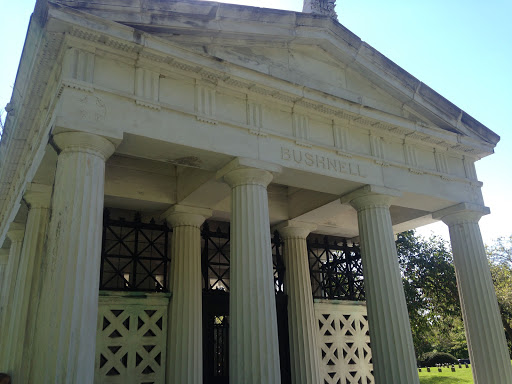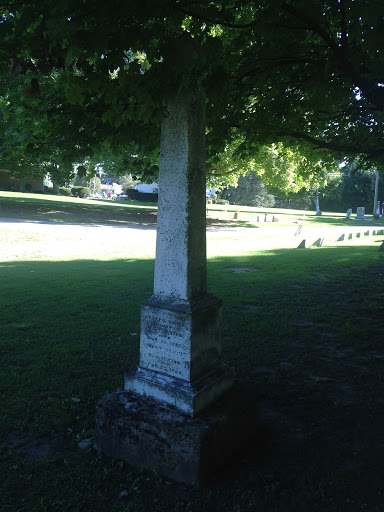
|
| Michael DiSalle |
Born: January 6, 1908
Died September 14, 1981
Political Party: Democrat
Term of Office: January 12, 1959- January 14, 1963
Buried: Calvary Cemetery Toledo, Ohio
No. 32 of 58
Michael DiSalle was born in New York City. His family moved to Toledo, Ohio when he was 3 years old. He attended Georgetown University and later got his law degree.
In 1937 he was elected to the Ohio House of Representatives. Over the coming years he would run for both the U.S. House and U.S. Senate, losing every time. In 1950 President Harry S. Truman appointed him to be director of the Office of Price Stabilization during the Korean War. He spent 12 years working in Toledo area politics, serving one term as Mayor of Toledo along the way. In 1956, DiSalle was the Democratic Nominee for Governor of Ohio but lost to C. William O'Neill. In 1958 he ran for Governor again and this time he won. DiSalle was the first Governor to serve a 4 year term without having to win reelection. Before this time Ohio elected a new Governor every 2 years.
In 1960, DiSalle ran as a "favorite son" candidate in Ohio for the Democratic Presidential nomination. This method was used so that a candidate with no chance can have a say in the party platform by shifting their delegates to a candidate who does have a shot. DiSalle gave his support to John F. Kennedy. He would remain a loyal ally of the Kennedy's until his death. In 1968 he lead a draft movement to get Ted Kennedy to run for President but withdrew upon Kennedy's request. Then in 1980 he was an honorary chairman of Ted Kennedy's Presidential campaign.
As Governor, DiSalle signed the bill making Ohio's official motto"With God, all things are possible". He was so opposed to the death penalty that he made a point to hire convicted murders to serve on his household staff, to demonstrate his faith in rehabilitation. In spite of this, he did allow 6 executions to happen during his term as Governor. He was a very hard working Governor, committing himself to 16 hour work days.
After loosing reelection he returned home to continue his law practice. He died in 1981.
I visited the gravesite of Governor DiSalle in October of 2016. My son and I went to Toledo to see former President Clinton at a rally for his wife. After which we went and found Governor DiSalle's gravesite pretty easy. It was right next to the gate as we pulled into the cemetery.
In 1937 he was elected to the Ohio House of Representatives. Over the coming years he would run for both the U.S. House and U.S. Senate, losing every time. In 1950 President Harry S. Truman appointed him to be director of the Office of Price Stabilization during the Korean War. He spent 12 years working in Toledo area politics, serving one term as Mayor of Toledo along the way. In 1956, DiSalle was the Democratic Nominee for Governor of Ohio but lost to C. William O'Neill. In 1958 he ran for Governor again and this time he won. DiSalle was the first Governor to serve a 4 year term without having to win reelection. Before this time Ohio elected a new Governor every 2 years.
In 1960, DiSalle ran as a "favorite son" candidate in Ohio for the Democratic Presidential nomination. This method was used so that a candidate with no chance can have a say in the party platform by shifting their delegates to a candidate who does have a shot. DiSalle gave his support to John F. Kennedy. He would remain a loyal ally of the Kennedy's until his death. In 1968 he lead a draft movement to get Ted Kennedy to run for President but withdrew upon Kennedy's request. Then in 1980 he was an honorary chairman of Ted Kennedy's Presidential campaign.
As Governor, DiSalle signed the bill making Ohio's official motto"With God, all things are possible". He was so opposed to the death penalty that he made a point to hire convicted murders to serve on his household staff, to demonstrate his faith in rehabilitation. In spite of this, he did allow 6 executions to happen during his term as Governor. He was a very hard working Governor, committing himself to 16 hour work days.
After loosing reelection he returned home to continue his law practice. He died in 1981.
I visited the gravesite of Governor DiSalle in October of 2016. My son and I went to Toledo to see former President Clinton at a rally for his wife. After which we went and found Governor DiSalle's gravesite pretty easy. It was right next to the gate as we pulled into the cemetery.
 |
President Kennedy applauding Governor DiSalle at his birthday party on the Ohio State fairgrounds on January 6, 1962
 |
Governor DiSalle and President Kennedy at the Army Navy football game in 1962
 |
DiSalle family marker
 |
My son Nicky
 |
 |
 |
Governor DiSalle and I











